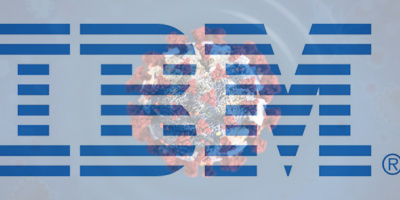At first, market analysts optimistically called it the Asian flu, that strange economic malady affecting Asian markets. No need to worry, they claimed, the impact would not be felt here. But the collapse of Thailand, Indonesia, Malaysia, and South Korea; the market meltdown in Japan and Hong Kong; and the competitive currency devaluations that followed attest to another reality, one that has the potential to benefit AS/400 owners, both present and prospective.
Background
In November 1997, I wrote a column titled “The Hidden Costs of the Free Market” for MC. In it, I discussed the market’s lack of conscience, the problems caused by the reckless movement of capital in search of cheap labor, and the absence of regulatory restraints. “The global economy will have to acknowledge its global obligations or risk implosion,” I wrote. Well, it didn’t take long. In early January, William Pfaff, an editorial page columnist for the International Herald Tribune in Paris, warned that Asia was, in his words, imploding.
Far from being localized, the effects are being felt globally and will continue to be felt—certainly by American taxpayers who are underwriting huge bailouts and unquestionably by IBM, now a global company subject to global market fluctuations. And whatever has the power to impact a $75 billion-a-year-plus corporation like IBM will, by extension, impact its customers, albeit indirectly.
Dark Cloud over IBM
IBM will suffer because the bulk of its revenues now come from overseas, and sales in Asia and Latin America will tumble. As of this writing, U.S. technology stocks have been the hardest hit and are deemed by experts to be the most vulnerable to overseas
economic decline. Europe could be the next economic power to be sucked into the deflationary whirlpool, which would further depress IBM’s sales. According to Pfaff, German and French banks have even greater loan exposure in Asia than American banks. Additionally, the severe devaluation of Asian and Latin American currencies will make American goods—particularly big-ticket items such as computers—much more expensive. If the downward cycle continues, IBM faces the prospect that what was merely expensive yesterday will become prohibitive tomorrow.
Struggling Asian and Latin American economies will have little choice but to try to export their way out of economic calamity and, therefore, will seek to keep the value of their currencies low in order to make their exports more attractive to the vast and lucrative American market. Thus, IBM’s products will remain costly overseas for the foreseeable future, contributing to America’s towering trade imbalance.
As a result of these conditions, some economists grimly predict that the U.S. trade deficit could soar to $300 billion a year, nearly double its current level. If so, American business will be further stressed, producing a domino effect. Fewer American exports will mean fewer jobs and less domestic production, resulting in closed factories and rising unemployment. That, in turn, will result in a reduced American capacity to absorb foreign imports, which could deepen the deflationary spiral by retarding the Asian recovery.
Silver Lining for Customers
IBM will find that many of its customers are playing things close to the vest. With international markets ailing and profits in decline, large multinational producers (most of whom are IBM’s customers) will not likely invest in new technologies but will seek to leverage the technology they presently own. Even after the downsizing frenzy of the ’90s, most multi-nationals, including IBM, will once again be looking for ways to cut costs. Simultaneously, they will grapple to attract new customers. That could be good news for those considering the purchase or upgrade of an AS/400: There should be some great deals available later this year as IBM tries to domestically recoup its foreign losses. If global sales falter sufficiently, IBM may be forced to cut prices substantially in an effort to generate new business. Or, if IBM chooses to hold prices, incentive packages in the form of discounted software and services are likely to be offered. It will be a buyer’s market for purchasers able to overcome the herd instinct commonly reflected in reaction to stock market seizures. Simply stated, every time Alan Greenspan sneezes, the nation need not catch cold.
If, in spite of inducements, hardware isn’t moving (and moving is a relative term since IBM sold over $36 billion of it last year), look for Big Blue to assuage its big blues by focusing on software and services. Over the last several years, the company has consciously moved away from hardware as its mainstay and developed a formidable and highly profitable array of service offerings. Entering 1997 and looking beyond, the company already had $38 billion in services booked, and that trend will certainly continue to grow.
What services can AS/400 owners expect? The answer is, whatever they clamor for. If the global economy falters, the United States will be the market of last resort, and customers will be desperately sought and, therefore, in a strong position to demand more from IBM’s product and service offerings. E-business pioneers will have an especially strong hand to play since e-commerce is the arena IBM has chosen for its silicon-based prodigy we’ve come to know as the AS/400.
A Time to Fine Tune
Those businesses that rely on e-commerce may find that the “bait locally, catch globally” strategy will also be impacted by the turmoil in foreign markets: Fewer
customers may be biting. But if business slows and major development projects are put on hold, perhaps the lag time can be a blessing for typically overworked data processing installations.
For one thing, the next few months may offer the opportunity to catch up on the backlog of items that always seems to be superseded by today’s emergency. This is a good time, perhaps, to perform a full IS audit to assess and remedy any weaknesses in your company’s data processing practices. And, especially if your business aspires to profit from e-commerce any time soon, this is the time to spruce up your Web site.
The Internet is already overloaded with Web sites, so only those few who have a faithful Internet following can claim that creating a Web site that both attracts and retains customers is not among their highest priorities. Fortunately, the AS/400 is fully loaded to support everyone’s wildest Web fantasies, and even those installations with modest programming skills can acquire software that will convert database information and AS/400 host applications to HTML in real time.
Success conducting e-commerce, however, will depend not so much on having a Web site but on having one that people will revisit. Here, a floundering global economy can be of service: A time when hardware prices are likely to be low and service offerings are likely to be plentiful is a good time to address the fundamental problem with the electronic shopping experience—boredom. Once the global economy bottoms out, everyone will be redoubling efforts to find new Internet customers and recoup losses. Choice overload and customer boredom will be the chief obstacles. Most Web sites I have visited have one thing in common: They are sites I will never visit again. For the most part, they are as dull, dull, dull as a record stuck on a single track.
The quickest way for IBM to make money is to help its customers make money. So, while governments attack sluggish economies, ask IBM to assail your monotonous Web site and grace it, like a strong economy, with many possibilities.
Long-term Outlook
How long this deflationary cycle will last is anyone’s guess. By the time this article is published, the worst may be over, or, like a hurricane building out at sea, the vortex may be gaining momentum and heading for these shores. In either case, the boom and bust cycle is likely to be repeated.
IBM—indeed, any business—needs a measure of predictability and stability to survive and thrive. Current global economic policies provide neither by subsidizing reckless investment. IBM is certainly big enough to ride out the storm, but its stockholders and overseas employees will doubtless be impacted. Ironically, the solution of choice to speculative assaults on foreign economies rewards the perpetrators and punishes the victims. When banks and lending institutions fail because of their own greed and bad judgment, they are offered obscene taxpayer-funded bailout packages. These are provided under the condition that local governments adopt strict “reforms” that typically include higher taxes and reduced government services, hardships that most adversely impact those on the bottom of the economic ladder who have no investment in the market.
The multibillion-dollar bailouts proposed to assuage the effects of unregulated movement of capital across national borders exposes the persistent inconsistency of free- market advocates: People and business must suffer the vicissitudes of market forces, but capital need not.
There are some hopeful signs, however. Increasingly, the public and legislators are becoming skeptical of socializing the risks of capital markets. Some have proposed a modest tax on the international movement of currency that could be used to fund future recoveries. The Federal Reserve can help by cutting interest rates and thus reducing the cost
of borrowing money. Notwithstanding other efforts, however, the unaccountable nature of today’s financial markets will continue to produce panics and collapses until some restrictions are placed on the unregulated and amoral flow of capital across borders. That would provide a measure of stability to the world’s more vulnerable economies and, in turn, a more predictable business environment for such global competitors as IBM.





















 More than ever, there is a demand for IT to deliver innovation. Your IBM i has been an essential part of your business operations for years. However, your organization may struggle to maintain the current system and implement new projects. The thousands of customers we've worked with and surveyed state that expectations regarding the digital footprint and vision of the company are not aligned with the current IT environment.
More than ever, there is a demand for IT to deliver innovation. Your IBM i has been an essential part of your business operations for years. However, your organization may struggle to maintain the current system and implement new projects. The thousands of customers we've worked with and surveyed state that expectations regarding the digital footprint and vision of the company are not aligned with the current IT environment. TRY the one package that solves all your document design and printing challenges on all your platforms. Produce bar code labels, electronic forms, ad hoc reports, and RFID tags – without programming! MarkMagic is the only document design and print solution that combines report writing, WYSIWYG label and forms design, and conditional printing in one integrated product. Make sure your data survives when catastrophe hits. Request your trial now! Request Now.
TRY the one package that solves all your document design and printing challenges on all your platforms. Produce bar code labels, electronic forms, ad hoc reports, and RFID tags – without programming! MarkMagic is the only document design and print solution that combines report writing, WYSIWYG label and forms design, and conditional printing in one integrated product. Make sure your data survives when catastrophe hits. Request your trial now! Request Now. Forms of ransomware has been around for over 30 years, and with more and more organizations suffering attacks each year, it continues to endure. What has made ransomware such a durable threat and what is the best way to combat it? In order to prevent ransomware, organizations must first understand how it works.
Forms of ransomware has been around for over 30 years, and with more and more organizations suffering attacks each year, it continues to endure. What has made ransomware such a durable threat and what is the best way to combat it? In order to prevent ransomware, organizations must first understand how it works. Disaster protection is vital to every business. Yet, it often consists of patched together procedures that are prone to error. From automatic backups to data encryption to media management, Robot automates the routine (yet often complex) tasks of iSeries backup and recovery, saving you time and money and making the process safer and more reliable. Automate your backups with the Robot Backup and Recovery Solution. Key features include:
Disaster protection is vital to every business. Yet, it often consists of patched together procedures that are prone to error. From automatic backups to data encryption to media management, Robot automates the routine (yet often complex) tasks of iSeries backup and recovery, saving you time and money and making the process safer and more reliable. Automate your backups with the Robot Backup and Recovery Solution. Key features include: Business users want new applications now. Market and regulatory pressures require faster application updates and delivery into production. Your IBM i developers may be approaching retirement, and you see no sure way to fill their positions with experienced developers. In addition, you may be caught between maintaining your existing applications and the uncertainty of moving to something new.
Business users want new applications now. Market and regulatory pressures require faster application updates and delivery into production. Your IBM i developers may be approaching retirement, and you see no sure way to fill their positions with experienced developers. In addition, you may be caught between maintaining your existing applications and the uncertainty of moving to something new. IT managers hoping to find new IBM i talent are discovering that the pool of experienced RPG programmers and operators or administrators with intimate knowledge of the operating system and the applications that run on it is small. This begs the question: How will you manage the platform that supports such a big part of your business? This guide offers strategies and software suggestions to help you plan IT staffing and resources and smooth the transition after your AS/400 talent retires. Read on to learn:
IT managers hoping to find new IBM i talent are discovering that the pool of experienced RPG programmers and operators or administrators with intimate knowledge of the operating system and the applications that run on it is small. This begs the question: How will you manage the platform that supports such a big part of your business? This guide offers strategies and software suggestions to help you plan IT staffing and resources and smooth the transition after your AS/400 talent retires. Read on to learn:
LATEST COMMENTS
MC Press Online